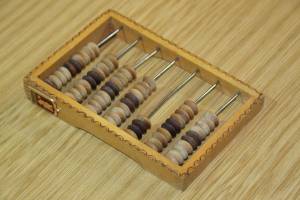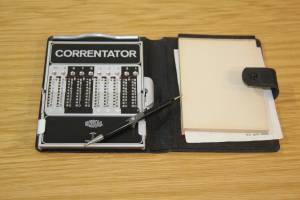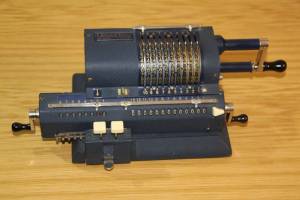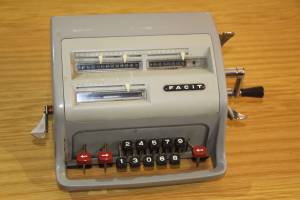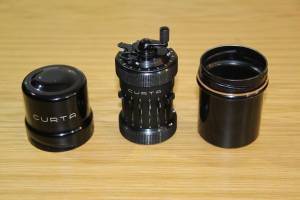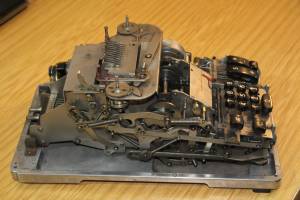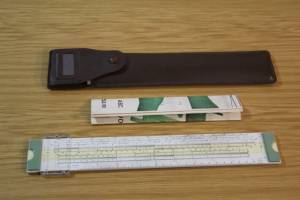Start
Exhibitions
Presentations
Workshops
Stream
Association | Donations
Press
Archive
User Tools
Sidebar
Table of Contents
This is an old revision of the document!
Historic Calculating Tools from Abacus to Curta
Herbert Lange This exhibition shows various calculating devices and tools that have been used until the 1970ies when pocket calculators and computers took over their role.
Overview
Abacus
Addiator
| Manufacturer | Unical |
|---|---|
| Model | Correntator |
| Year of introduction | ca 1945 |
| Country | Switzerland |
| Initial price | 58 SFr |
| Method | Slide adder |
Mechanic Calulator
Mechanic Calculator
Mechanic Calculator
| Manufacturer | Contina |
|---|---|
| Model | Curta Model I |
| Year of Introduction | 1948 |
| Country | Liechtenstein |
| Method | Leibniz wheel |
Electromechanic Calculator
| Manufacturer | Original-Odhner |
|---|---|
| Model | X-11 C-5 |
| Year of introduction | 1950 |
| Country | Sweden |
| Method | Rack and pinion toothed bar |
Slide rule
Details
Abacus
The abacus is probably one of the most famous computing tools and has found widespread use in various cultures and over many eras. An abacus makes adding and subtracting numbers more easy, but the user has to take care of carrying over digits themselves. Other types of calculation are rather laborious but potentially possible. Various designs and Layouts are possible, e.g. the Chinese Suanpan is divided into groups of five beads.
Shown is a Russian abacus (счёты, schoty) with a division into groups of ten beads with some beads colored differently. An exception is a row with four beads for quarter rubles. This shows a popular use in commerce and generally for calculating amounts of money. The model shown could have been a souvenir because it bears the coat of arms and the name of the city of Yaroslavl (Ярослáвль).
Addiator
An addiator is a clever development of the basic principle of the abacus. In place of beads on a wire, metal strips are shifted in a rack. The position of the strip determines the number selected.
Addition and subtraction are still the main opperations supported. To select a number, the number in the corresponding column is selected with a metal stylus and the relevant metal strip is pulled down. A display at the top shows the currently selected digit. To add two numbers, the first number is transferred to the device using the method described. The second summand is then transmitted in a similar way. When adding, a carry can occur. In this case it is not possible to pull the strip down completely (this is also indicated by a red marking on the metal strip). In this case, the corresponding column is moved upwards instead and an automatic carryover is made to the next column.
In order to subtract, one begins to transfer the number into the device as with the addition. Then the cover with the number labels is folded down. Automatic carryover is also possible with subtraction.
After use or in the event of an incorrect entry, the device can be reset with a lever.
A Swiss model from Correntator is on display. Other manufacturers produced slightly different models, especially in the way that subtraction is possible.
Virtual Exhibition Desk
Availability Times
| Day | Day |
|---|---|
| Saturday | 10:00 - 12:00 |
| Saturday | 13:00 - 15:00 |
| Saturday | 18:00 - 19:00 |
| Sunday | 11:00 - 13:00 |
| Sunday | 15:00 - 17:00 |

